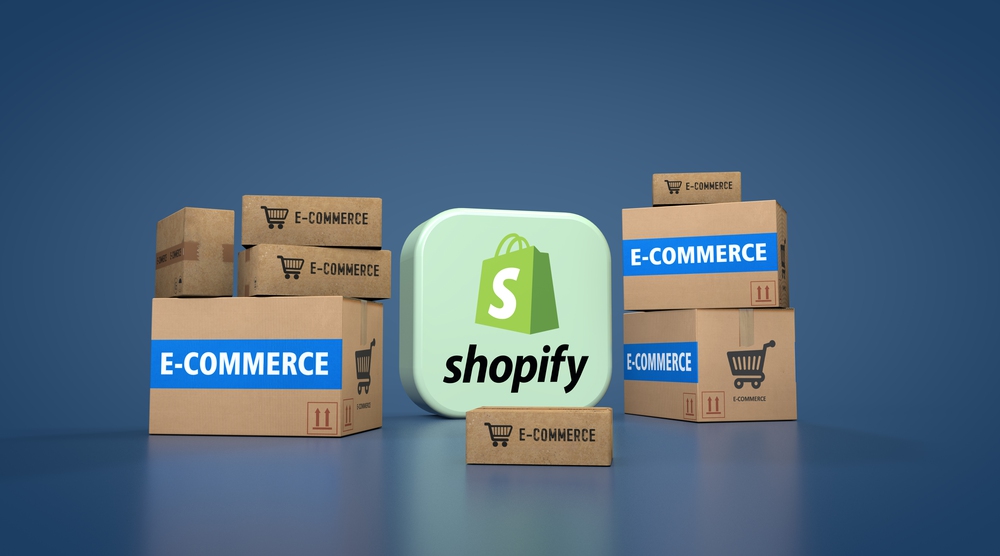
100+ NEW Shopify Features Announced, But Is It a Scam?
Feb 5, 2024 4 minutes
Shopify’s latest announcement of introducing over 100 new features has stirred the ecommerce world, marking a significant upgrade aimed at empowering merchants.
This expansive rollout showcases Shopify’s dedication to innovation, offering tools that promise to redefine the online selling experience. From enhancing product discovery to streamlining operations, these features of Shopify are designed to bolster sales and improve customer engagement.
Yet, this wealth of options brings forth questions about necessity and utility, challenging the notion that more is always better in the digital commerce landscape.

My eyes!
Part 1: The Shopify Feature Bonanza
In the latest Winter 2024 edition, Shopify has once again set the bar high, unveiling a suite of over 100 new features that cement its reputation as one of the most innovative and feature-rich ecommerce platforms in the market.
This ambitious update spans across the entire Shopify ecosystem, offering merchants a wide array of tools and functionalities designed to enhance every aspect of the online selling experience.
Feature-Rich Platform
From sophisticated AI-powered search capabilities that understand complex customer queries to advanced product customization options that allow for unique customer experiences, Shopify’s new features are a testament to its commitment to providing merchants with the resources they need to succeed.
Enhancements in Shopify POS (point of sale) systems promise a seamless integration of online shopping and in-person retail store sales channels, while the introduction of more granular control over discounts and promotions opens up new avenues for sales strategies.
Moreover, Shopify has expanded its B2B functionalities, recognizing the growing importance of wholesale and direct-to-business sales in the ecommerce landscape. This includes streamlined order management systems and improved customer segmentation, enabling merchants to cater to a broader audience more effectively.
Despite the vast potential these features hold, they also introduce a level of complexity and decision-making for merchants. With such an extensive toolkit at their disposal, the challenge now lies in navigating through these options to find the most relevant and impactful solutions for their specific business needs.
Empower your store with a payments system that supports your business model.
Top 20 New Features Overview
Here’s an overview of the top 20 new features that stand out for their innovation and potential impact on merchants’ businesses:
- AI-Powered Context-Aware Search: Introduces semantic understanding to product searches, allowing customers to find products through natural language queries.
- Customizable Checkout Experience: Offers enhanced customization options for the checkout process, including layout changes and personalized upsell suggestions.
- Enhanced POS System: Upgrades to Shopify’s POS system to better integrate online and offline sales, with new functionalities for inventory management and customer insights.
- Advanced Discount Engine: Allows for more complex discount codes and strategies, including dynamic pricing and bundled offers, to increase sales and customer loyalty.
- Product Bundling Options: Enables merchants to create and sell product bundles, improving average order value and inventory management.
- Improved Analytics Dashboard: A revamped analytics interface provides deeper insights into sales patterns, customer behavior, and website performance.
- B2B Wholesale Management: Expanded features for managing wholesale relationships directly from Shopify, including custom price lists and order forms.
- Sustainability Widgets: Tools to display carbon offset initiatives and sustainable practices to customers, enhancing brand reputation.
- Global Selling Solutions: Enhanced multi-currency and multi-language support to streamline international sales and expand market reach.
- Shopify Fulfillment Network Enhancements: Improvements to Shopify’s fulfillment options, including better integration with third-party logistics providers.
- Custom Product Recommendations: Leveraging AI to offer personalized product recommendations based on customer behavior and preferences.
- Augmented Reality (AR) Product Previews: Enabling AR views of products to provide a more immersive shopping experience.
- Subscription Model Support: Expanded support for subscription-based selling, including improved customer management and billing options.
- Social Media Integration Enhancements: New tools for integrating Shopify ecommerce stores with social media platforms, making social selling more seamless.
- Live Chat Support: Introduction of live chat features for real-time customer support directly through the Shopify platform.
- Improved Fraud Protection: Enhanced security features to protect against fraud and ensure secure transactions.
- Email Marketing Tools: New email marketing functionalities to create, execute, and analyze campaigns directly from Shopify.
- Interactive Storefront Editor: An intuitive drag-and-drop interface for customizing online store layouts and themes.
- Shop Pay Installments: Expansion of payment options to include installment payments, improving accessibility for customers.
- Shopify Capital Expansion: Broader access to funding options for merchants to grow their online businesses.

It’s not all or nothing, it’s choice.
Part 2: Are All These Features Necessary?
In an era where the digital landscape is constantly evolving, Shopify’s release of over 100 new features is a testament to its ambition to lead the ecommerce platform market. However, this vast array of features, while impressive, introduces a critical question: Is more always better?
Feature Overload
For many merchants, navigating through this extensive list of new tools and functionalities can be as daunting as it is exciting. The concept of “feature overload” comes into play when the sheer volume of options available becomes overwhelming rather than empowering.
This phenomenon can lead to analysis paralysis, where decision-making is stalled by too many choices, and the complexity of the platform increases, potentially deterring rather than attracting new users.
Moreover, the necessity of these features for the average merchant is debatable. While some businesses may benefit from the cutting-edge AI-powered search capabilities or the intricate discount strategies now possible, the reality is that a significant portion of Shopify’s user base utilizes only a fraction of the platform’s capabilities. This discrepancy raises concerns about the efficiency and practicality of continuously adding features that may only serve a minority of users.
The challenge for merchants, then, is to sift through the noise to identify which features genuinely add value to their operations and customer experience. It requires a discerning eye to prioritize functionality over novelty, focusing on tools that streamline operations, enhance the customer journey, and drive meaningful engagement, rather than getting lost in the allure of endless options.
The Illusion of Innovation
A closer examination of Shopify’s latest reveals a nuanced reality where not all that glitters is groundbreaking. This brings us to the concept of “The Illusion of Innovation,” where the distinction between genuinely novel functionalities and repackaged, existing ones becomes blurred.
Redefining Existing Features
Among the plethora of announced features, several are essentially enhancements or slight modifications of existing capabilities.
For instance, the introduction of “new discount types” might initially appear as an innovative step forward. Yet, on closer inspection, these are often extensions of previously available discount functionalities, repurposed with added flexibility or integration capabilities.
Similarly, “bundled products” have been a staple in ecommerce for years, facilitated through various apps and workarounds. Shopify formalizing this into their platform, while beneficial, may not represent the leap in innovation it’s portrayed as.
Updates Masquerading as Innovations
A significant portion of the so-called new features are updates to existing ones, such as an updated checkout page or dashboard. While these improvements are undoubtedly valuable, enhancing user experience and potentially increasing conversion rates, they raise the question of whether they should be celebrated as innovations.
These updates are crucial for keeping the platform modern and competitive but conflating them with groundbreaking features can mislead users about the nature of the advancements being made.
Paid Add-Ons and the Cost of Innovation
Another aspect contributing to the illusion is the introduction of features that require additional payment, either through higher-tier plans or separate app subscriptions.
For example, connecting with Faire for wholesale opportunities or accessing 90+ new apps in the Shopify App Store for anything from checkout and shopping cart customization to SEO (search engine optimization) and marketing campaigns introduces new functionalities at an extra cost. This approach can create a scenario where the line between platform expansion and monetizing through the ecosystem becomes increasingly thin, challenging the perception of value provided.
Genuine Innovations Amidst the Noise
Despite these critiques, it’s important to acknowledge the genuine innovations interspersed among the updates and enhancements. Features like the AI-powered context-aware search demonstrate Shopify’s investment in cutting-edge technology to solve complex ecommerce challenges.
Such advancements offer tangible benefits to merchants, improving the shopping experience for customers and potentially driving sales.
Let’s simplify your store, not complicate it.

The choice is yours.
Part 3: Shopify’s Place in the Ecommerce Ecosystem
As Shopify continues to dominate the ecommerce platform landscape, offering an array of features aimed at enhancing merchant success, one area that has come under scrutiny is its payment system, Shopify Payments.
While Shop Pay provides a streamlined checkout process for customers, enhancing conversion rates and offering features like accelerated checkouts and installment payments, it also presents limitations that merchants must navigate as their businesses grow.
Shopify Payments Limitations
Compatibility and Flexibility Concerns
One of the primary challenges with Shopify Payments lies in its compatibility and flexibility with various business models. As businesses expand, particularly into international markets, they may encounter limitations related to currency conversions, payment methods preferred in different regions, and the integration of local payment solutions.
Shopify Payments (powered by Stripe) also may not support your business at all, even if the platform promotes it. For example, dropshipping is a high-risk business model that is only supported for so long before Shopify Payments will shut it down—trust us, it will happen.
This can pose a significant hurdle for merchants aiming to provide a localized shopping experience to customers across the globe.
Dependency and Control Issues
Another concern revolves around the dependency on a single payment processor. Relying solely on Shop Pay can limit a merchant’s control over their payment infrastructure.
For instance, changes in fee structures, processing times, or policies can directly impact a merchant’s operations and profitability. This dependency also means that merchants have fewer options to negotiate better rates or switch to providers that may offer more favorable terms or services tailored to their specific business needs.
Impact on Long-term Growth
For businesses that scale to a level of success where the limitations of Shop Pay become more pronounced, these challenges can transform from minor inconveniences to significant roadblocks.
The inability to seamlessly integrate alternative payment solutions or to offer the most suitable payment options to customers in different markets can impede a merchant’s ability to compete effectively and sustain growth. For example, credit cards run the western world, but many other regions prefer debit or some region-specific method.
Navigating Payment Solutions
The key for merchants facing these limitations is to explore alternative payment solutions that can complement or, in some cases, replace Shop Pay.
Integrating a dedicated merchant account or adopting a custom payment gateway can provide the flexibility and control needed to tailor the payment experience to business and customer needs. These solutions can offer more robust support for international transactions, improved negotiation leverage on fees, and enhanced customization options for the checkout process.
Customization Is Key
As businesses grow and their needs become more complex, the importance of customization becomes increasingly apparent. While Shopify provides a solid foundation out of the box, the real power of the platform lies in its ability to be tailored to the unique needs of each business.
Understanding the Need for Customization
Every business has its unique brand, audience, and operational challenges. A one-size-fits-all approach, no matter how feature-rich, cannot fully cater to the nuanced requirements of every merchant.
Customization allows businesses to refine their online presence, optimize their customer journey, and integrate with critical external systems and processes. This level of adaptability is crucial for standing out in a crowded market and providing a memorable brand experience.
Leveraging Shopify’s Flexibility
Shopify’s platform is designed with customization in mind. From templates and product page layout adjustments to custom apps and integrations, merchants have the tools at their disposal to create a custom storefront (easily done through the Shopify Theme Store) that truly reflects their brand and meets their customers’ needs.
Advanced APIs and a robust app ecosystem enable deeper functionality changes, allowing businesses to add specific features or automation of their operations.
The Role of Dedicated Merchant Accounts and Payment Gateways
One area where customization is particularly vital is in payment processing. While Shop Pay offers a streamlined solution for many merchants, the ability to integrate dedicated merchant accounts and custom payment gateways can be a game-changer.
This flexibility allows businesses to negotiate better rates, offer a wider range of payment options, and tailor the checkout experience to their market, enhancing customer satisfaction and potentially boosting conversion rates.
Custom Checkout Experiences
Customizing the checkout process can significantly impact sales and customer loyalty. By tailoring this crucial part of the customer journey, businesses can reduce abandoned cart rates, offer upsells or cross-sells more effectively, and ensure that the checkout experience aligns with the rest of their branding and customer service standards.
Sell Online with a Better Shopify-Powered Ecommerce Website
Ultimately, Shopify’s value to merchants lies in its flexibility and the ecosystem it nurtures. The platform’s real power is unlocked not by the sheer number of available features but by the strategic, thoughtful application of those that align with a merchant’s specific goals and challenges.
As ecommerce businesses evolve, so too must their approach to leveraging Shopify, continuously reassessing which features, integrations, and customizations will drive them towards their vision of success—regardless of your Shopify plan (Shopify Plus, Advanced Shopify, etc.).
Shopify remains a formidable platform in the ecommerce space, capable of serving a wide range of businesses. However, the path to maximizing its benefits is paved with decisions that require a deep understanding of one’s business, a clear vision for the future, and a willingness to invest in customization.
By embracing this approach, merchants can ensure that their Shopify store not only stands out in a crowded market but also grows and evolves in alignment with their long-term business objectives.
Start your “new” Shopify journey today, empowered and ready to grow.





5 thoughts on “100+ NEW Shopify Features Announced, But Is It a Scam?”